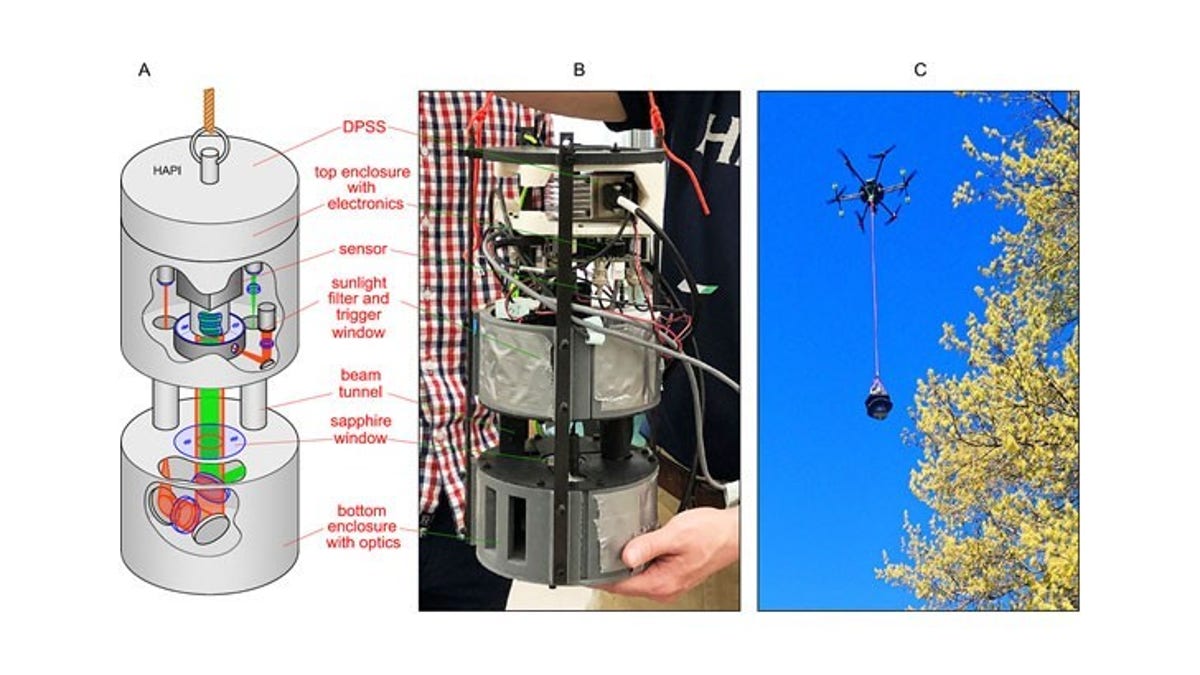Fox News Flash top headlines for October 18
Fox News Flash top headlines are here. Check out what's clicking on Foxnews.com.
The U.S. Army has teamed up with experts from academia to develop a 3D-printed device carried on drones that can detect potentially lethal aerosols.
Researchers say the technology behind the miniaturized holography instrument will give soldiers greater awareness of the areas they're operating in and could help identify threats, such as biological warfare agents.
“The instrument, called the Holographic Aerosol Particle Imager, or HAPI, has the unique ability to image multiple particles freely entering its sensing volume from any direction via a single measurement,” explains the Army, in a statement. “Using digital holography, the instrument obtains the images in a non-contact manner, resolving particles larger than ten micrometers in size in a sensing volume of approximately three cubic centimeters.”
The HAPI is constructed from 3D-printed polymer structures, ensuring that it's small and light enough to be carried on a “commercial grade” drone, according to the Army. The technology is already being used to assess aerosols like dust and pollen.
ARMY PARTNERS WITH UNIVERSITY OF ILLINOIS ON AUTONOMOUS DRONE SWARM TECHNOLOGY
A paper on the emerging technology has been published in the journal Nature Scientific Reports.

At left, a model of the HAPI instrument. In the center, a photograph of the instrument with parts of the outer protective casing removed and. at right, a photograph of the HAPI instrument during a field trial near a pollinating tree. (Army/Supplied)
The project began at the Army Research Laboratory, which is part of the U.S. Army Combat Capabilities Development Command, about 10 years ago. The research started with current CCDC ARL researcher and fellow Dr. Gorden Videen and the then postdoctoral student Dr. Matthew Berg, who is now a professor at Kansas State University.
“This was a novel idea at the time,” said Videen, in the statement. “Gaining information about aerosols is hard because they don’t sit still, so they are difficult to image because the focal plane of cameras is so narrow. Holography circumvents this problem because the focusing can be done by processing in a computer after the hologram is formed.”
Berg continued working on the project when he was hired at Mississippi State University before he returned to Kansas State. Experts from the University of Maryland, College Park and the University of Central Florida also participated in the research, along with Dr. Ryan Mersmann from Kansas State.
ARMY DEVELOPING DRONES THAT CAN CHANGE SHAPE MID-FLIGHT
The Army says that, with additional onboard processing, images can be captured in real-time and sent to a computer or a phone via Wi-Fi or Bluetooth.
In a separate project, Army researchers are working with the University of Illinois Chicago on unmanned technology for recharging drone swarms.
The university has been awarded a four-year, $8 million cooperative agreement “to develop foundational science in two critical propulsion and power technology areas for powering future families of unmanned aircraft systems,” according to a recent statement released by the Army Research Laboratory.
CLICK HERE TO GET THE FOX NEWS APP
In another project, the Army has been working with Texas A&M University to develop drones that can change shape in mid-flight.
Follow James Rogers on Twitter @jamesjrogers






















